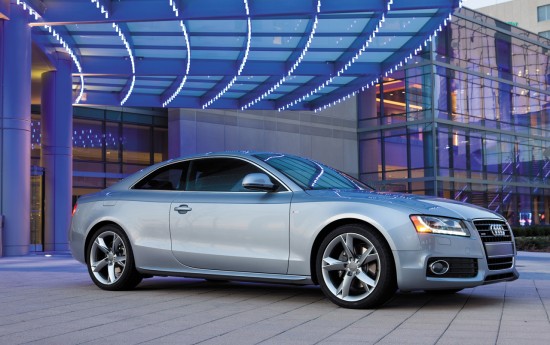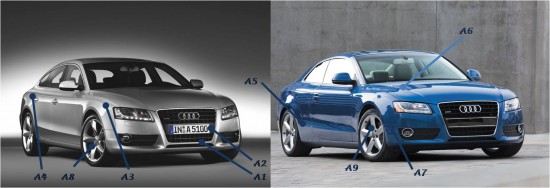2010 Audi A5 (Design Critique)
Once upon a time, automakers offered three basic body styles in the United States: sedan, coupe, and wagon. The sedans were the practical vehicles, and thus, the volume sellers. The wagons were offered for those who just couldn’t fit the whole family in something as limiting as a sedan. Coupes were clearly better looking than their sedan and wagon counterparts and appealed to those who wanted style and could live with the limitations imposed by two doors.
These coupes were the ultimate expression of what a particular car line could be. But then something happened. Automakers got brave with the rooflines on their sedans. Before long coupes were nothing but sedans without rear doors. Sales plummeted and many manufactures saw little point in offering this outdated and irrelevant body style.
Audi seemed to think the time had come for a truly passionate coupe to be offered alongside of the good looking, but pedestrian, A4 sedan. What they created was a coupe so breathtaking that it seemed to demand a greater numerical digit than the A4. The A5 is a styling masterpiece in any of its trim levels.
Of course, the A5 still has all the practical shortcomings of a coupe. This sent Audi designers to create something more practical, but they didn’t settle on a four door coupe like the Mercedes-Benz CLS or even Audi’s sister brand’s Passat CC. No, they decided on a 5 door hatchback. It’s a shame that everyone knows that hatchbacks don’t sell in the United States: our hopes of seeing one on this continent are next to none. The A5 Sportback, as it is called, is arguably as good looking as the coupe but with distinctly alternate rear end styling.
A1. Front end styling is virtually identical, differing only in the twin chrome bars on the bumper bar in the grille.
A2. Speaking of which, why must Audi mar their oversized signature grille with this bar? Clearly it functions as a location for the European front plate along with some level of crash worthiness. However, this draws unfortunate attention to an item that is best minimized. Perhaps Europe should follow the lead of many of the US states in eliminating the front plate altogether.
A3. This fender line is absolutely gorgeous. This car looks ready to pounce.
A4. The detail flows gracefully up and over the rear wheels on both cars.
A5. Lower character line sweeps upward as it stretches towards the rear of the car, adding the appearance of mass at the rear of the cars as if to indicate this is a RWD car. Though the front proportions of the car imply a longitudinal powertrain, this car is FWD/AWD.
A6. Crisp character is a wonderful detail that emphasizes the ‘power dome’ hood and continues all the way to the bottom of the fascia. It seems every manufacturer is trying to copy this detail these days.
A7. Even the cut lines in the doors, rocker panel, and front fascia are carefully drawn. Audi designers clearly realize that a poorly angled cutline can ruin an otherwise great design.
A8. These wheels are an interesting and compelling variation on the traditional five-spoke design.
A9. These wheels are not. They are nice enough but could be associated with any car.
A10. While the broad shouldered look of the coupe is flawless, the Sportback fender seems to be even more flawless…is that even possible?
A11. Continuous arch of window and roofline has been an Audi styling cue for some years now. It is carried out successfully on the Sportback, but somehow abandoned on the coupe. No problem, it looks good either way.
A12. The Sportback fails to avoid the dogleg window shape that is most closely associated with BMW than any other brand. Impressively, the glass on the rear door and quarter window appear perfectly flush.
A13. Lower bumper faces are needlessly different on these cars. Quite curious.
A14. The overall rake to the backlight on both cars appears nearly identical. Could Audi have made the coupe a hatchback in disguise, or did they fear this would hurt the car’s upscale image in markets like the United States?
A15. A bit of trivia: European plate actually means something – ‘IN’ indicates Ingolstadt, while the A5 designates the model. This coupe’s plate is simply the basic Michigan format.









